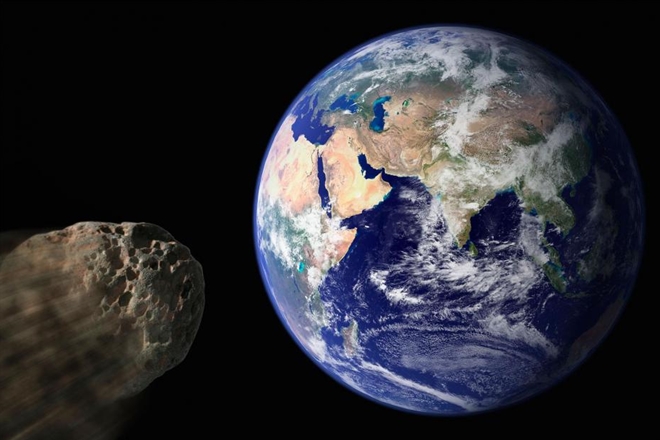Nasa will use asteroid flyby in October to test 'planetary defence' against a real threat
- NASA tests return capsule for next-generation orion manned spacecraft
- NASA astronauts lose essential ISS fabric shield during spacewalk
- NASA captures vivid pictures of giant superstar cluster
As ever, Nasa will use the opportunity to study the asteroid from relatively close-up, taking a look at it and finding data. But at the same time they will also put those systems to the test, seeing how effectively the world can work together to keep the planet safe in the event of a deadly asteroid.
Nasa and other agencies have been working hard to co-ordinate that potential response. It relies on organisations around the world and hasn't been properly tested, and so the asteroid offers a useful opportunity.
 |
| Asteroid 2011 UW-158 will pass 1.5 million miles away from Earth. Photo: Independent |
"This is the perfect target for such an exercise because while we know the orbit of 2012 TC4 well enough to be absolutely certain it will not impact Earth, we haven't established its exact path just yet," said Paul Chodas, manager of Nasa's Center for Near-Earth Object Studies. "It will be incumbent upon the observatories to get a fix on the asteroid as it approaches, and work together to obtain follow-up observations than make more refined asteroid orbit determinations possible."
It's possible, if very unlikely, that at some point in the future a more dangerous asteroid could get closer to us. And scientists want to be prepared for when that will happen.
"Scientists have always appreciated knowing when an asteroid will make a close approach to and safely pass the Earth because they can make preparations to collect data to characterize and learn as much as possible about it," said Michael Kelley, program scientist and NASA Headquarters lead for the TC4 observation campaign, in a statement. "This time we are adding in another layer of effort, using this asteroid flyby to test the worldwide asteroid detection and tracking network, assessing our capability to work together in response to finding a potential real asteroid threat."

